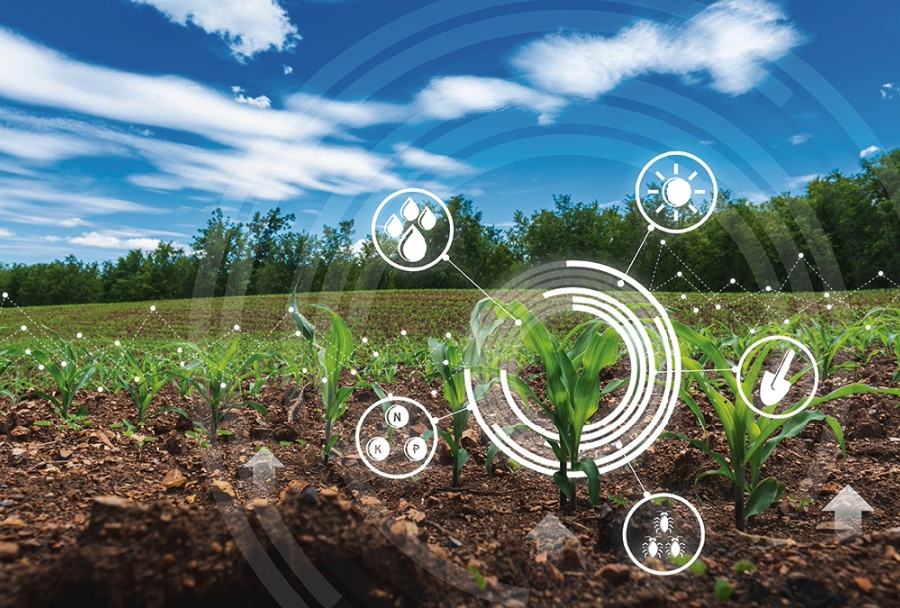Artificial Intelligence(AI) in Soil Quality Monitoring
However, Computer science breakthroughs such as Artificial Intelligence in soil quality monitoring technologies can aid in the protection and conservation of soil quality by allowing for the faster and safer processing of massive volumes of data gathered during physical soil sampling and remote imaging. Soil is considered a critical resource since it is the foundation of global agriculture and food production. Unfortunately, due to geographical limitations and a lack of scientific resources, assessing soil quality can be challenging.
Fourth Agricultural Revolution
Artificial intelligence (AI) and machine learning (ML) technologies employed in the monitoring of soil quality and fertility employ diverse algorithms for the interpretation of agricultural data. Machine learning applications employ both supervised and unsupervised methods in order to facilitate data analysis procedures, thereby providing adequate components to offer a statistical resolution to the problems that necessitate the utilization of these techniques.
Utilizing artificial intelligence technology, specifically electronic programs designed for deep learning, farmers have the capability to identify probable nutrient deficits in soil quality.
Various agricultural technologies, such as Farm Beats, have been developed to facilitate farming practices. These technologies enable farmers to capture images using their smartphones and afterward upload these images to an artificial intelligence (AI) development system. Following a comprehensive evaluation of the issue at hand, farmers are furnished with a range of restorative methodologies and alternative approaches aimed at enhancing both the quality of the soil and the yield of the crop.
Agricultural producers currently possess the ability to utilize agricultural data sources that were previously inaccessible in order to inform their decision-making processes. These sources include satellite and unmanned aerial vehicles (UAV), humidity sensor readings, and ground-based weather stations. Concurrently, there is a continuous influx of novel monitoring and control systems into the market, which offer enhanced customization and precision in the analysis and forecasting of soil quality.
In the year 2014, a total of 190,000 daily measurements were recorded on the intelligent agricultural infrastructure that was incorporated within various farms. It is projected that by the year 2050, the number of measurements conducted on a daily basis will increase to approximately 4.1 million. The ability to traverse the vast amount of information available today is highly challenging and often requires the assistance of computer systems such as artificial intelligence technology.
Artificial intelligence (AI) plays a crucial role in soil quality analysis and the wider agricultural sector by engaging in the generalization, analysis, and processing of data obtained from diverse monitoring devices. Additionally, AI systems provide recommendations and ideas based on the analyzed data.
AI Technologies to Monitor Soil Quality
In a study of soil application and nutrient uptake, Brazilian agricultural firm InCeres has developed an app that can forecast soil quality and fertility. The study is based on information such as soil chemical composition, weather conditions, crop types, and satellite photos of plant growth rates.
InCeres’ program predicts soil fertility by analyzing massive amounts of data and producing precise projections for each unique region of farming.
According to Leonardo Menegatti, lead researcher at InCeres, the traditional way of chemical analysis will cost the farmer R$200 (Brazilian real) per acre over 10 years, whereas the new approach will cost only R$40 over the same period, saving 80%. Already, technology is providing answers for the profitable operation of agricultural businesses. The application will learn and anticipate soil quality in the future as the program develops.
Varatharajalu and Ramprabu have created an automated watering system for boosting crop growth using a soil moisture sensor, temperature sensor, pressure regulator sensor, and molecular sensor from various soil quality monitoring methodologies.
Sensor outputs are transformed into digital signals and sent to the multiplexer over a wireless network such as Zigbee or a hotspot.
The University of South Australia’s Dr. Ali Al-Naji and Professor JavaanChahl collaborated on a system that properly analyses soil quality indicators such as moisture using a standard RGB digital camera. It analyses variations in soil color to identify moisture content using a standard video camera.
The digital camera was coupled to an artificial neural network (ANN) that was taught to recognize different soil moisture levels in different weather conditions.
Challenges in AI Systems in Agriculture
Data preparation is a major impediment to forecasting and estimating factors such as soil quality.
Agricultural research is often dependent on solid, reproducible, and representative data sets. As a result, even though we may develop numerous Al models, weather and climate change can impact temperature, soil moisture, photosynthetic rate, and ecological balance. Crop output could drop significantly in a short period of time under such conditions, necessitating frequent data collecting.
Increased digitization across industries will inevitably translate into agriculture. Intelligent devices, such as artificial intelligence and machine learning, can convert simple data inputs into useful knowledge. When used in agriculture, even monitoring aspects like soil quality, it has the potential to change the entire food supply chain.
Sources
https://www.techtarget.com/searchenterpriseai/definition/AI-Artificial-Intelligence
https://www.azorobotics.com/Article.aspx?ArticleID=482
https://www.marlborough.govt.nz/environment/land/soils/soil-quality-monitoring
https://www.ibm.com/topics/machine-learning
https://www.britannica.com/technology/military-aircraft

